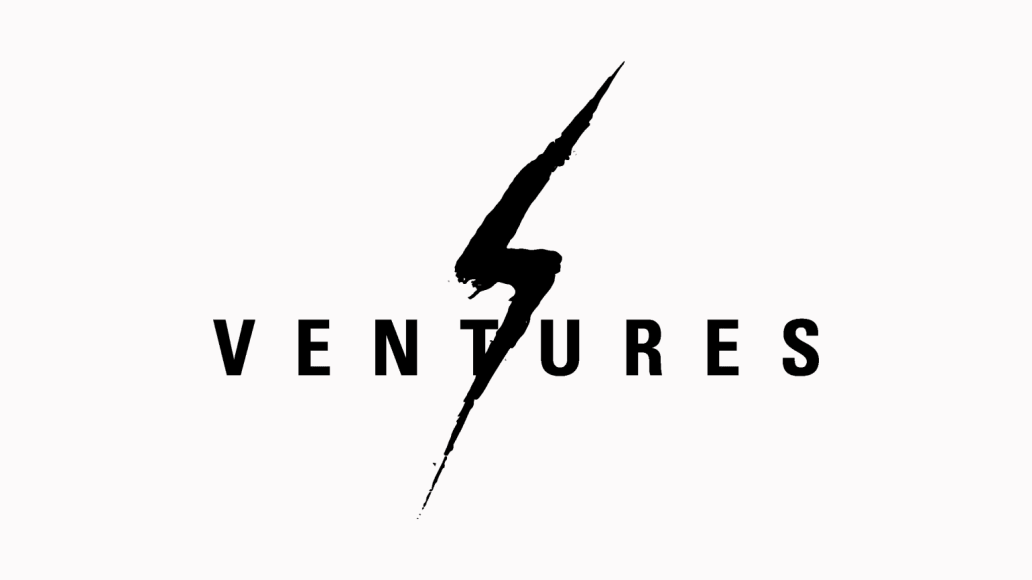Calculating the total cost of ownership (TCO) for a reporter’s notepad is pretty basic: until all the pages are filled up, you won’t need to invest another penny. For pens, it all depends on how long the ink lasts. Even the cost of owning a printing press is based on straightforward factors such as its age, maintenance fees, and the price of replacement parts.
With digital tools and software, media TCO got a lot more complicated, and potentially a lot higher.
Depending on what’s in your tech stack, TCO can involve a dizzying mix of hardware, software, and services. Some of the technologies media companies run consist of off-the-shelf products. Some are tools they’ve tried to build or jerry-rig themselves. No matter where the budget has been allocated, these technologies all have to drive performance while offering the ability to scale and keep data secure.
The rush to keep up with business demands means the TCO of these investments can get blurry over time. For example, 25% of publishers are putting more effort into being found via traditional channels like Google search, but 56% are also now focusing on artificial intelligence services from the likes of Open AI and Perplexity. More than a quarter are also looking at launching new products around games and education.
TCO calculations can also get trickier as more media companies pursue mergers and acquisitions (M&A) as a growth lever. Once a deal is closed, the combined organization can be sitting with a host of duplicate and redundant tools. This isn’t limited to the technology you’d expect to find with a publisher, either: last year, more than half of media M&A deals involved an acquirer or target outside the sector.
As the media industry shakeout continues, lowering TCO is going to become more important than ever. Use this post to get the process started.
3 TCO elements media companies should know
TCO is multi-faceted. You need to calculate it in real time, even as your business continues to change, taking into account:
The upfront costs
Everything in your tech stack likely involved some kind of upfront investment. This could encompass hardware expenses for everything from servers to networking gear. Software-as-a-service (SaaS) tools and hosting might involve a subscription or monthly contract, and on-premise software usually incurs licensing fees. Even amid the shift to cloud computing for hardware as well as software, the direct costs remain.
Setup costs can also be significant when you’re implementing new technology, especially complex digital experience platforms (DXPs).
Ongoing operational expenses
TCO inches up the more your tech stack needs to be maintained, repaired, upgraded, replatformed, or migrated. The older pieces of your stack get, the more you begin to accrue tech debt, where you risk getting stuck in a seemingly never-ending loop of propping up and supporting legacy solutions.
If you need to integrate specific solutions, which often happens due to tech debt or simply change within the business, TCO will continue to grow. It also happens when you have to optimize the technology’s scalability and performance as you see increases in traffic and engagement. This can come in the form of paying for third-party services, or simply the time and effort from your internal tech team that could otherwise be focused on more innovative, revenue-driving work.
Staying ahead of cybersecurity threats represents yet another ongoing cost, especially when no one in the media (or any other sector) can afford to have their site hit with DDoS attacks or malware.
Business impact
The flip side of media sector TCO is that choosing the right solutions can make your entire organization faster, more agile, and achieve bigger results in areas like revenue. If you get a bigger return on investment (ROI) from your CMS through ease of use, improved maintenance, and less expensive upgrades, for example, TCO moves in a far more positive direction.
Beyond technology, of course, TCO is also affected by hard costs like headcount and office space, as well as ongoing costs like electricity and training staff. The point is to keep TCO as an agenda item so that everyone understands where it stands at any given moment, and to avoid any nasty surprises.
Once you’ve benchmarked internally, you can begin to get TCO where it needs to be. Here are some tactics to consider and try:
Embrace an ecosystem approach to managing TCO
There’s no such thing as an off-the-shelf solution to rising TCO. As tempting as an all-in-one suite like a DXP might be, the reality is you’re going to be locked into fixed workflows, limited development capabilities, and higher maintenance and optimization expenses the longer you own it.
Contrast that with a standalone but flexible CMS that you can deploy in a single-stack model, as part of a headless architecture or a hybrid of the two.
Just look at Edutopia, who reduced development costs and increased the speed of content production by taking a headless approach based on WordPress VIP.
A best-of-breed solution means you can pivot as the business grows, gets involved in an M&A, or experiences other changes. For Edutopia, it has opened the door to greater automation that can further optimize TCO and personalize experiences for its audiences.
Embracing ecosystems also brings you the benefit of an entire community of third-party developers creating plugins and integrations that save you from trying to DIY every platform change. For Edutopia, that ecosystem also includes a WordPress partner that has helped manage their digital journey and position them for future changes.
Standardize technology across web properties
Her Campus Media’s digital journey offers an object lesson in getting TCO under control. Their more than 15 years of successful growth was fuelled in part by acquisition, which led to a sprawling mix of technologies. This included platforms like Drupal 7, that were rapidly approaching end of life, and a custom Ruby on Rails application. Juggling three CMS solutions was showing the true cost of tech debt.
Moving to WordPress VIP as a united CMS has allowed Her Campus Media to achieve about a 90% reduction in development overhead. They’ve also standardized on Parse.ly to manage analytics across its properties—and it’s not the only media company to recognize the benefits of doing so.
Explore more

Her Campus Media Drives Massive Traffic Growth by Standardizing on WordPress VIP and Parse.ly
Gannett was staring down a potential legacy integration nightmare following their merger with Gatehouse Media. Having deeper insight into content performance was essential for them to understand when local articles might interest a national audience, but getting their teams to row in the same direction based on the same data-driven model had been be difficult because of their disparate legacy systems.
Standardizing on Parse.ly across more than 600 publications is now empowering Gannett staff to make smarter decisions about the investment they’re making in great journalism. They wouldn’t have the same speed and flexibility if they had stuck with more expensive, disparate solutions.
Explore more

How Parse.ly Helped Gannett Standardize Content Analytics for 600+ Publications
Design is another area where standardization brings financial rewards. Every publisher wants to offer a digital experience that’s accessible, inviting, and so compelling you’ll want to move from one story to the next. If that leads to treating every aspect of your website as a bespoke design project, though, you’re going to use up valuable budget dollars in both the short and long term.
Using WordPress VIP’s Gutenberg as a design system allows you to stay consistent across multiple sites and mitigate the risk of discrepancies between design and implementation. Gutenberg’s reusable blocks save a ton in development and maintenance resources so you can easily create posts and pages.
Explore TCO savings through artificial intelligence (AI)
Newsrooms around the world have had to spend the last several years not only covering developments in AI but considering how they could impact the way journalism is practiced. While there’s still a lot of work to be done to determine how media companies will combat disinformation that comes via AI and protect their intellectual property, the technology still holds a lot of promise in cutting down expenses.
With generative AI, for example, media companies can save money on custom development projects for new features in their sites and mobile apps through automatic code generation. AI can also enhance the service publishers provide subscribers by summarizing feedback and creating more granular audience segments to personalize the work they do.
Editors and reporters may not be ready to have AI write entire articles on their behalf, but there’s no question it can help automate tasks like organizing notes, combing through dense research materials to surface key takeaways and speed up the process of tweaking photos and video content.
You don’t have to introduce a slew of point products to experiment with AI. WordPress VIP’s Content Helper, for instance, is built directly into the CMS, and you can use it to do everything from suggesting titles and writing excerpts to automatically adding links and recommending related content.
Turn data-driven efficiency into TCO predictability
Publishers are putting out a product that can be difficult to assess from a cost perspective. Beyond the TCO calculations of the tools journalists and other departments use, there is time and effort involved in developing content that audiences consume. The data to measure the operational costs of their work is there, however. You just need to understand how to get at it and share it.
When you can use a platform like Parse.ly to track content performance by date, author, and across teams, everyone on your team gains a window into what’s driving attention, audience loyalty, conversions, and other growth metrics. You get better at managing the team and the costs that support their work, and your team gets better at rowing in the right direction.
From there, you can make more of your existing investments in technology solutions. WordPress VIP plugins like Editorial Notes and the core revisions feature, for example, can streamline editors’ and reporters’ workflows and provide greater efficiency. Media companies like Britain’s The Times have shown how doing so can increase time-to-publish by 34% and avoid expensive technical complexity.
At Savage Ventures, meanwhile, combining WordPress VIP with Parse.ly analytics has spurred truly data-driven decision-making. Editors can spot trends and act on them immediately. On the back end, the CMS’s unified code base makes future costs more predictable as Savage Ventures continues to grow by launching or acquiring additional publications, according to their CFO:
“We onboard new sites we acquire or create in a seamless manner without having to renegotiate the details of a contract. We have a bundle, consolidated pricing—we know exactly what the costs are, how the platform is managed, and what services are involved.”
David Webb—CFO, Savage Ventures
Explore more

How Savage Ventures Grew Its Audience 121% With WordPress VIP
Why media companies need to stay on top of TCO
Good journalism recognizes that big issues, such as the global economy or political upheaval, need more than a single article or segment to capture the full story. It takes an ongoing commitment to monitoring what’s going on, analyzing, and reporting back on the latest developments to an audience that needs to know.
Tracking TCO may not be as dramatic as covering world events, but it’s not a once-and-done activity, either. Establish where your operating costs are today, pare down your tech debt, and standardize on a flexible platform to tell a better story tomorrow.
Author

Shane Schick, Founder—360 Magazine
Shane Schick is a longtime technology journalist serving business leaders ranging from CIOs and CMOs to CEOs. His work has appeared in Yahoo Finance, the Globe & Mail and many other publications. Shane is currently the founder of a customer experience design publication called 360 Magazine. He lives in Toronto.




